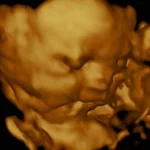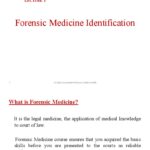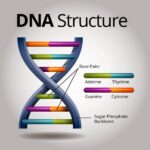PCR, or Polymerase Chain Reaction, and RFLP, Restriction Fragment Length Polymorphism, are both molecular biology techniques vital in genetic analysis. However, they operate on fundamentally different principles and serve distinct purposes. Understanding their disparities is crucial for researchers navigating the intricate landscape of molecular diagnostics and genetic research. Think of PCR as an enzymatic photocopier, replicating DNA sequences ad infinitum, while RFLP acts as a molecular fingerprinting technique, revealing subtle variations in DNA structure.
Core Principles: Amplification vs. Digestion
PCR’s primary function is amplification. It leverages the power of DNA polymerase, an enzyme that synthesizes new DNA strands complementary to a template sequence. Through repeated cycles of denaturation, annealing, and extension, a specific DNA region can be exponentially amplified, creating millions of copies from a single starting molecule. This amplified product can then be used for downstream applications like sequencing, cloning, or genotyping. The beauty of PCR lies in its targeted approach, allowing scientists to isolate and study specific genetic regions with incredible precision. It’s like zooming in on a specific street address from a vast satellite image of a city.
Conversely, RFLP relies on restriction enzymes, molecular scissors that cleave DNA at specific recognition sites. These sites are short nucleotide sequences, typically 4-8 base pairs long. If a DNA sequence contains a polymorphism, or variation, at or near a restriction site, the enzyme may or may not cut the DNA at that location. This differential cutting pattern results in DNA fragments of varying lengths. The resulting fragments are then separated by gel electrophoresis, a technique that separates molecules based on size. The banding pattern generated on the gel serves as a unique “fingerprint” for that particular DNA sample. Think of it as comparing the barcodes of different products; subtle variations in the barcode pattern differentiate one product from another.
Workflow Differences: A Tale of Two Techniques
The workflows of PCR and RFLP are drastically different. PCR involves a relatively straightforward protocol: mixing DNA template, primers (short DNA sequences complementary to the target region), DNA polymerase, and nucleotides in a reaction tube. This mixture is then subjected to thermal cycling, alternating between different temperatures to facilitate denaturation, annealing, and extension. The entire process can be completed in a few hours, yielding millions of copies of the target DNA.
RFLP, on the other hand, involves a more elaborate procedure. First, genomic DNA must be isolated and purified. This DNA is then digested with one or more restriction enzymes. The resulting fragments are separated by gel electrophoresis, typically using agarose gels. After electrophoresis, the DNA fragments are often transferred to a membrane by Southern blotting. This membrane is then probed with a labeled DNA sequence complementary to the region of interest. The probe hybridizes to the DNA fragments on the membrane, and the resulting banding pattern is visualized using autoradiography or chemiluminescence. The entire RFLP process can take several days, requiring meticulous attention to detail.
Applications: From Diagnostics to Forensics
PCR and RFLP find applications in diverse fields. PCR’s versatility makes it indispensable in molecular diagnostics, where it’s used to detect infectious agents like viruses and bacteria. It’s also used in genetic testing to identify disease-causing mutations, and in forensic science for DNA fingerprinting. Furthermore, PCR is a cornerstone of modern biotechnology, enabling gene cloning, site-directed mutagenesis, and the creation of genetically modified organisms.
RFLP, while somewhat supplanted by newer techniques like single nucleotide polymorphism (SNP) analysis, still holds value in certain applications. It can be used for mapping genes, identifying genetic diseases, and determining parentage. In agriculture, RFLP has been used to assess genetic diversity in crops and livestock. However, its labor-intensive nature and lower throughput compared to PCR-based methods have limited its widespread adoption.
Sensitivity and Specificity: A Comparative Analysis
PCR boasts remarkable sensitivity, capable of amplifying even minute amounts of DNA. This is particularly advantageous in scenarios where the starting material is limited, such as in forensic investigations or when analyzing ancient DNA. The specificity of PCR is determined by the design of the primers. Well-designed primers will amplify only the intended target sequence, minimizing off-target amplification.
RFLP’s sensitivity is inherently lower than PCR’s, as it relies on the detection of naturally occurring DNA fragments. It is not an amplification technique. Its specificity depends on the choice of restriction enzyme and the probe used for Southern blotting. Using a highly specific probe ensures that only the target region is visualized, reducing the risk of false positives. However, RFLP is less sensitive to contamination than PCR, as it does not involve an amplification step that could amplify contaminating DNA.
Advantages and Disadvantages: A Balanced Perspective
PCR’s advantages include its speed, sensitivity, and ease of use. It can be readily automated, allowing for high-throughput analysis. However, PCR is susceptible to contamination, which can lead to false positive results. It also requires prior knowledge of the target sequence for primer design. Furthermore, PCR may introduce amplification bias, where certain DNA sequences are amplified more efficiently than others.
RFLP’s advantages include its relative insensitivity to contamination and its ability to detect a wide range of genetic variations, including insertions, deletions, and point mutations. However, RFLP is labor-intensive, time-consuming, and requires relatively large amounts of DNA. It also has lower sensitivity compared to PCR-based methods and is less amenable to automation.
In summation, PCR and RFLP are powerful tools with distinct strengths and weaknesses. PCR excels at amplifying specific DNA sequences, making it ideal for diagnostics and gene cloning. RFLP provides a comprehensive overview of DNA fragment patterns, useful in mapping genes and assessing genetic diversity. The choice between these techniques depends on the specific research question, available resources, and desired level of sensitivity and specificity.









Leave a Comment